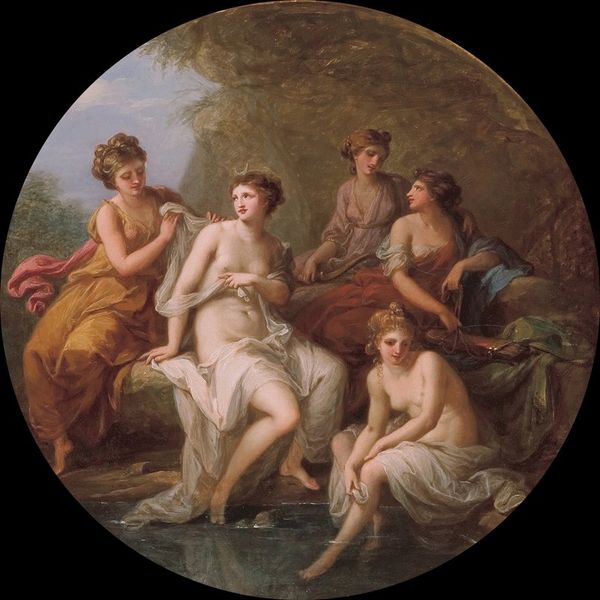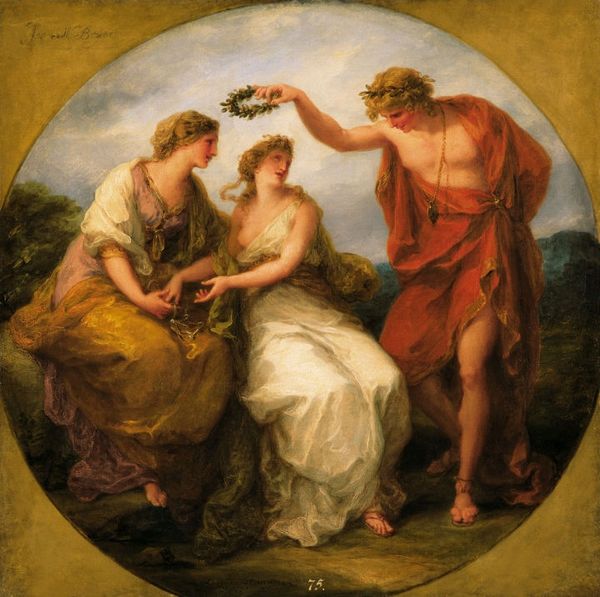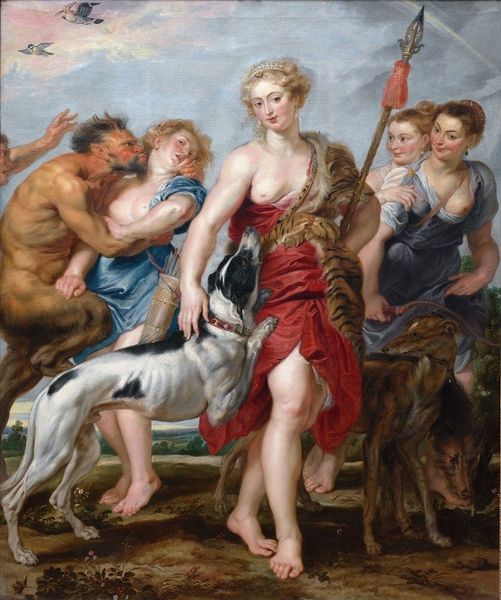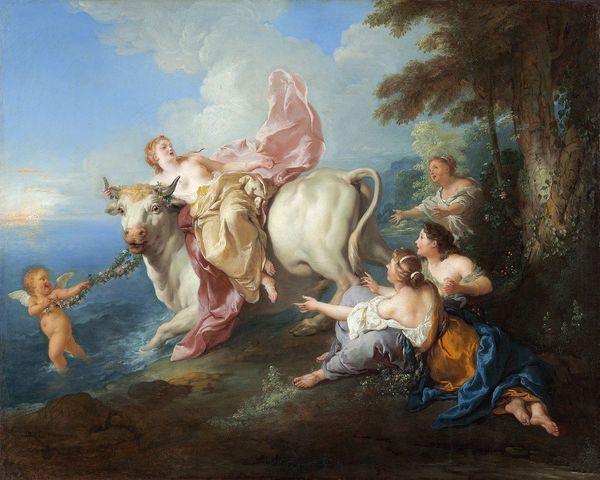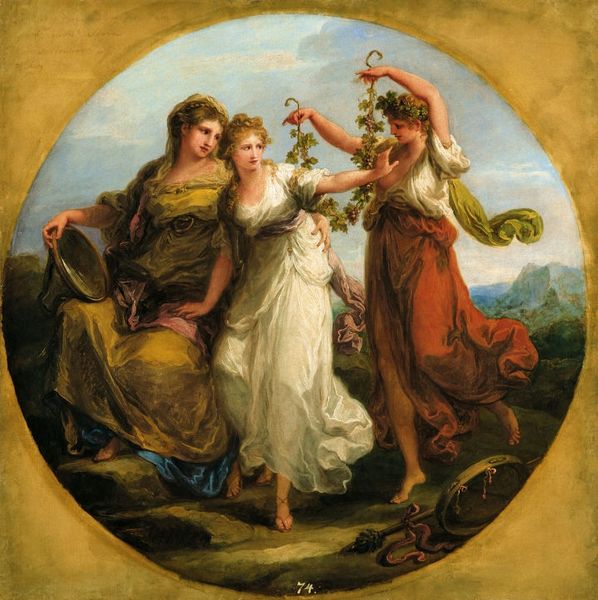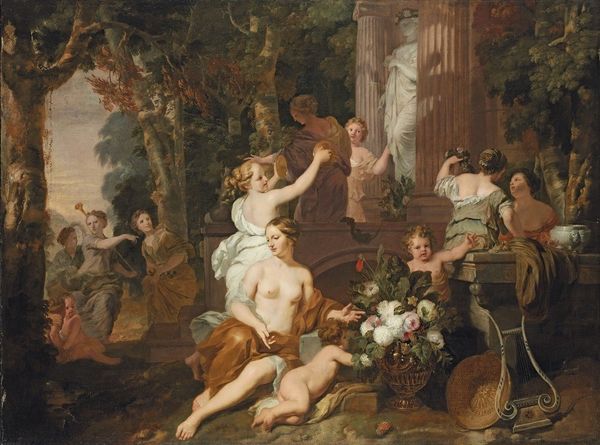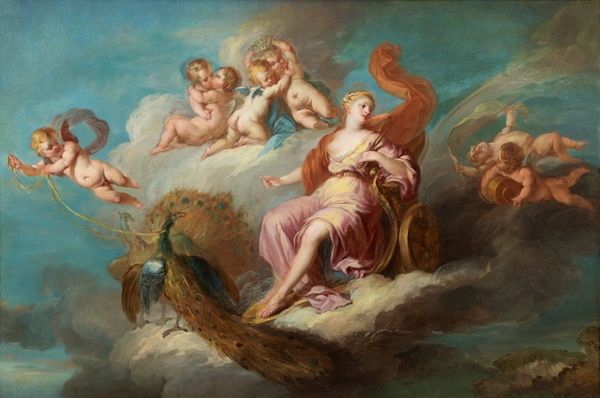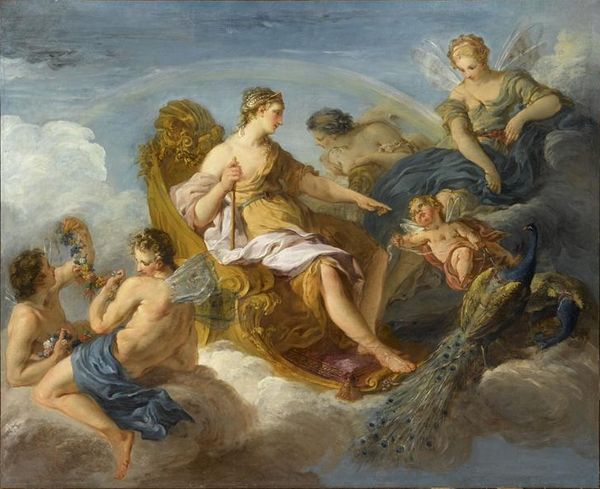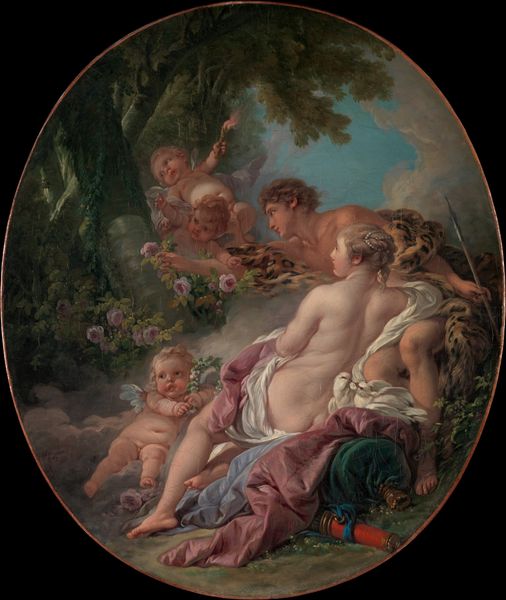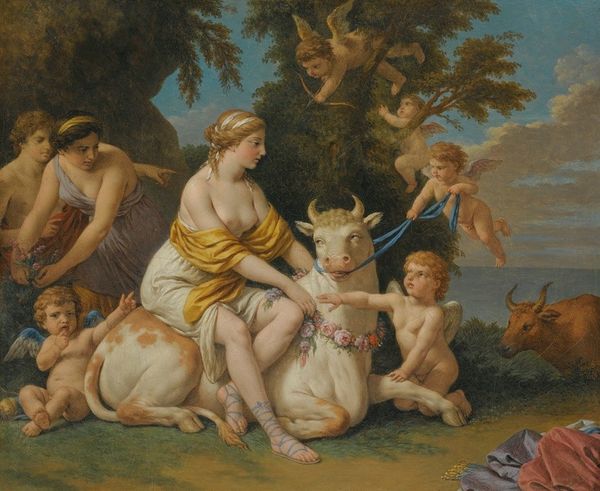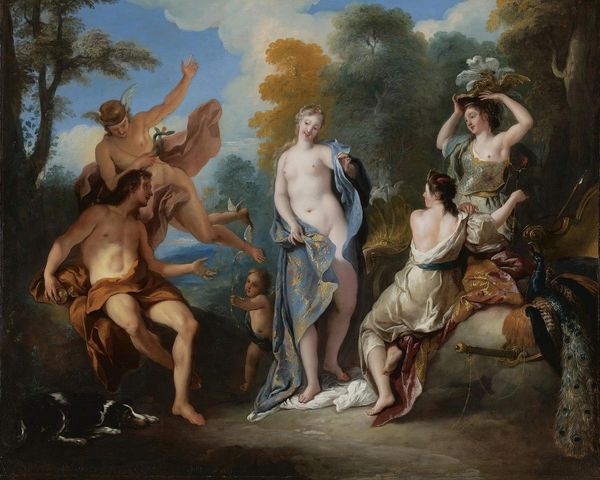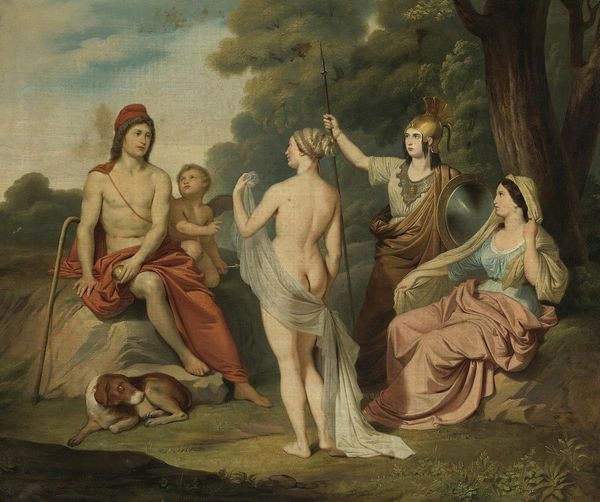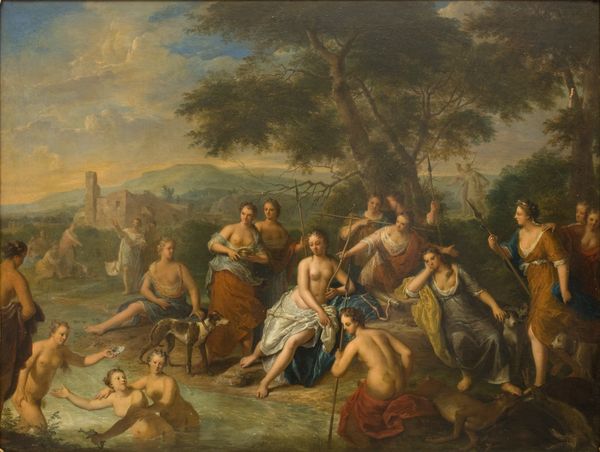
painting, oil-paint
#
neoclacissism
#
allegory
#
baroque
#
painting
#
oil-paint
#
figuration
#
form
#
oil painting
#
mythology
#
line
#
history-painting
#
academic-art
#
nude
#
realism
#
rococo
Copyright: Public Domain: Artvee
Curator: This image presents us with Angelica Kauffmann's "The Triumph of Venus with the Three Graces." Editor: It’s gorgeous! A swirling composition of bodies and fabric, everything seems to float in the Rococo style. You just want to reach out and touch the figures depicted in creamy, soft color. Curator: Absolutely. This is academic art with Baroque flourish filtered through a Neoclassical sensibility, where we can consider Venus and the Three Graces as archetypes, revealing aspects of feminine beauty, harmony, and grace. The garland the Graces hold speaks to cycles, community, and the enduring power of relationships. Notice the infant in Venus' lap being crowned with laurel - the symbolism points to achievement, divinity, and poetic immortality. Editor: It’s definitely working overtime, trying to reach an ideal beauty. I mean, look at the surface of the oil paint. Everything is rendered to perfection. How long did this take to create? What kind of labor was involved in achieving such luminosity? What pigments were used? What was Kauffman's studio practice like, her assistants, if she had them? Did they also adhere to a specific artistic production principle? Curator: Excellent questions. Focusing on materials and the modes of production are extremely valuable in approaching artwork such as this. These are not questions considered with academic or art historical scrutiny traditionally. We do see echoes of ideal forms that date back millennia, forms that resonated for the generations that came afterward. And while there’s a surface gloss, there is also emotional and intellectual depth if you engage with it over time. Editor: Agreed. And engaging with artmaking over time, especially the type associated with craft, requires specialized labor and specific modes of economic and material valuation. We have to unpack that as well. Curator: It invites us to reconsider cultural inheritance as not just aesthetic refinement, but also shared understanding through common symbolic language. Thank you. Editor: Precisely. Understanding material value alongside artistic labor creates a broader historical interpretation. Thank you.
Comments
No comments
Be the first to comment and join the conversation on the ultimate creative platform.
